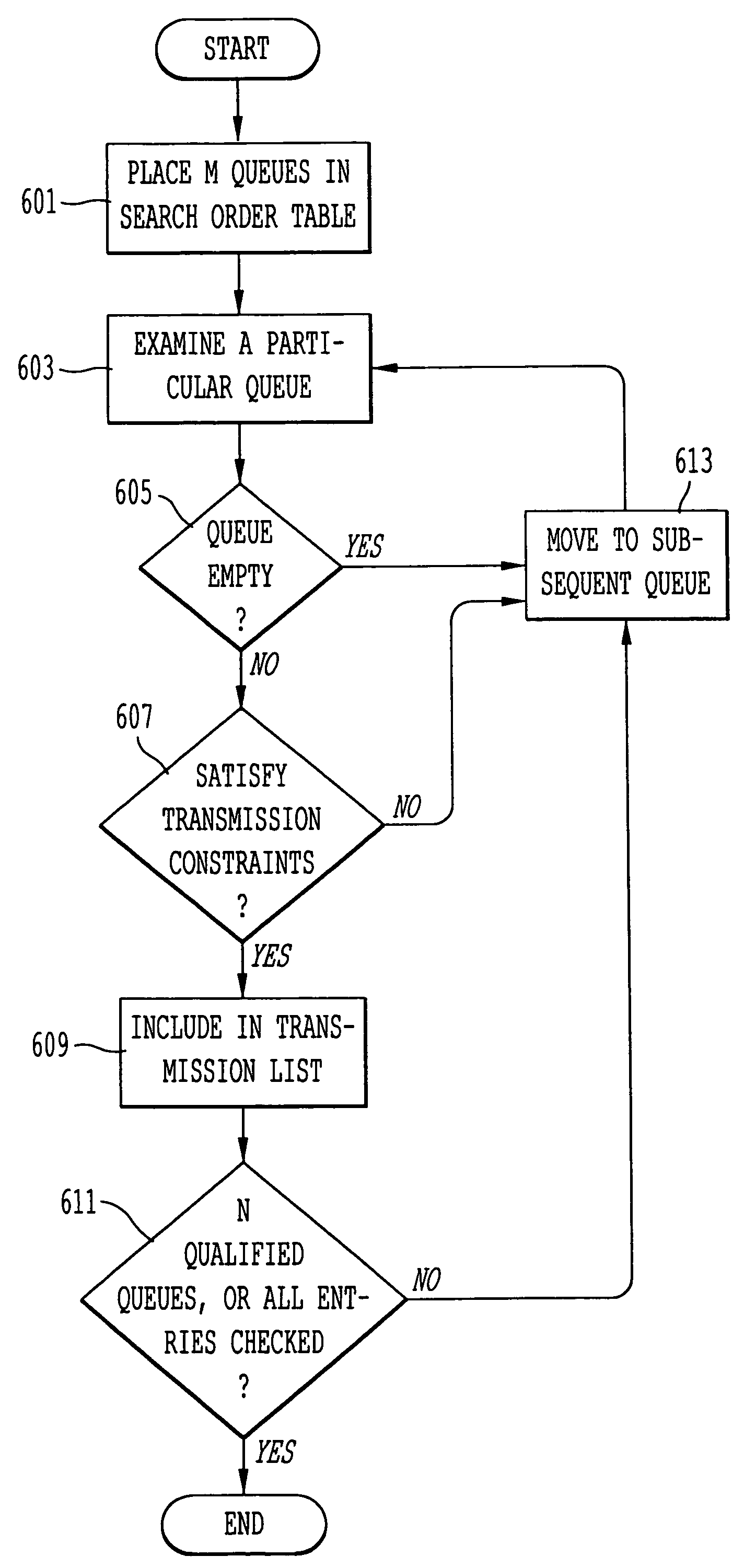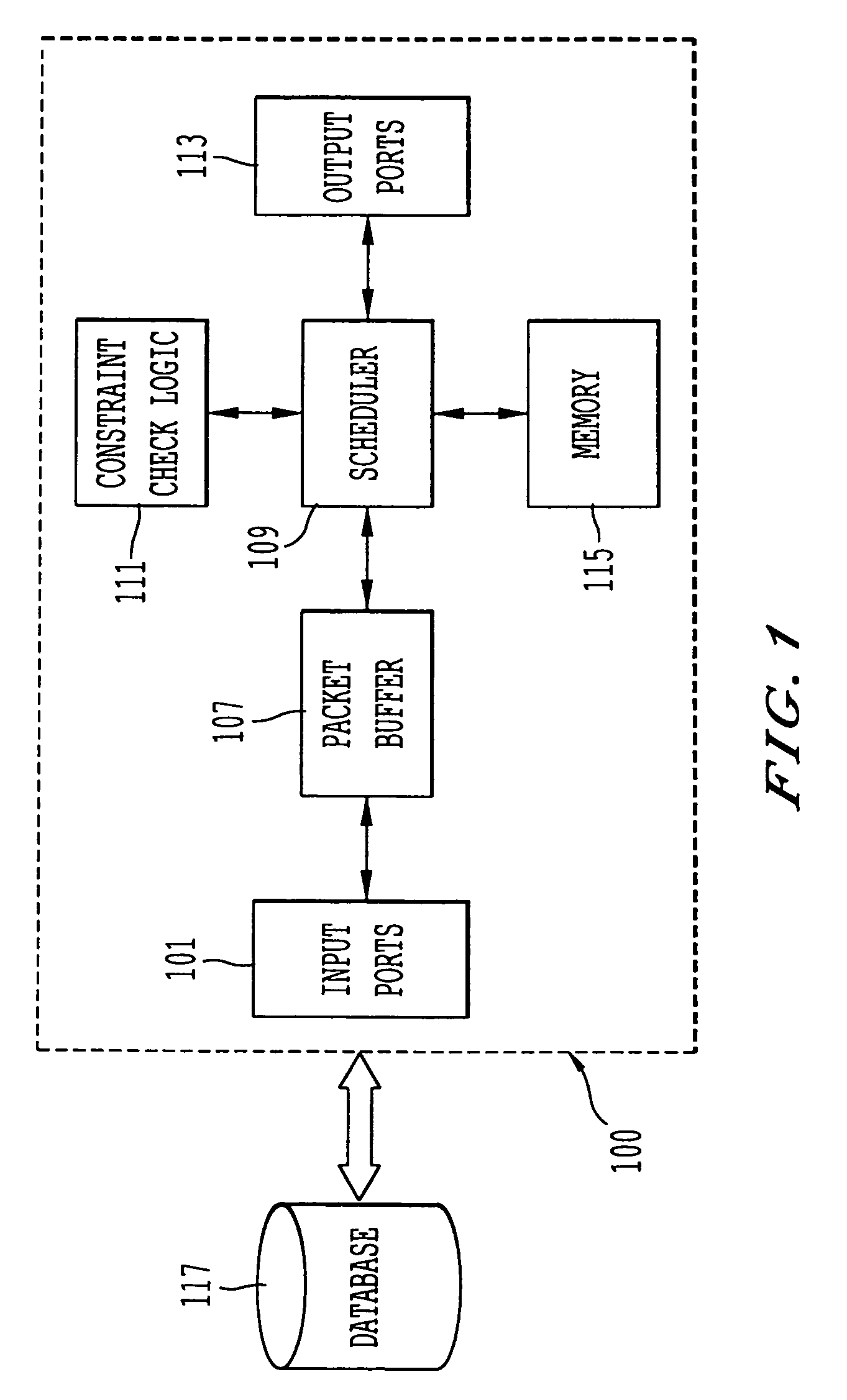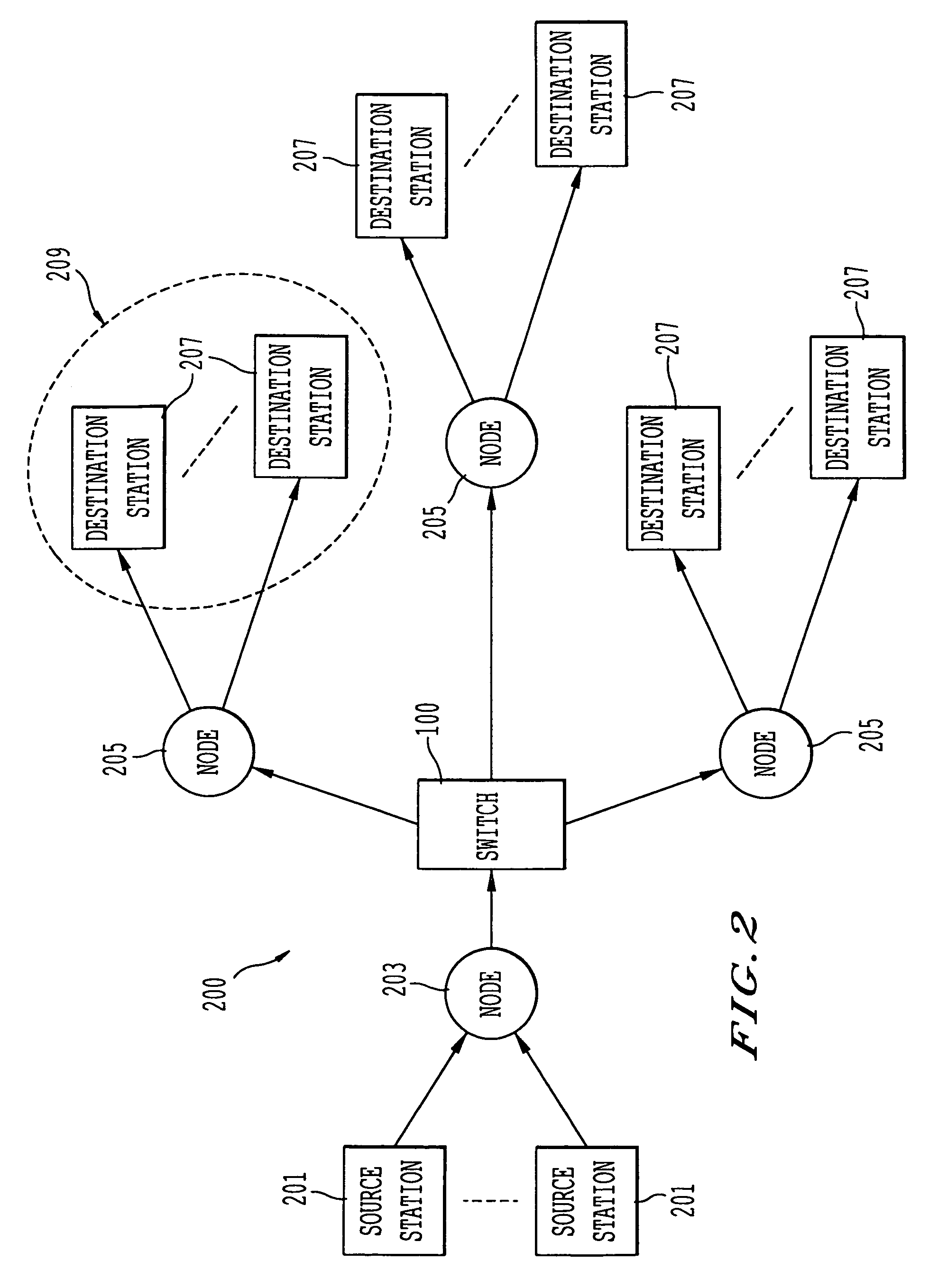Approach to minimize worst-case queuing delay for a switching communication system with transmission constraints
a communication system and transmission constraint technology, applied in the field of communication systems, can solve the problems of reducing application response times, putting tremendous strain on network resources (e.g., switch capacity), and less tolerant of network delays, so as to minimize the output delay, and minimize the queueing delay of packets
- Summary
- Abstract
- Description
- Claims
- Application Information
AI Technical Summary
Benefits of technology
Problems solved by technology
Method used
Image
Examples
Embodiment Construction
[0028]In the following description, for the purpose of explanation, specific details are set forth in order to provide a thorough understanding of the invention. However, it will be apparent that the invention may be practiced without these specific details. In some instances, well-known structures and devices are depicted in block diagram form in order to avoid unnecessarily obscuring the invention.
[0029]The present invention minimizes queueing delay of packets, in which multiple queues are configured to store packets for transmission. A memory stores a search order table that has table entries corresponding to the queues. Specifically, the table entries store values that correspond to the relative positions of the queues and that are selected based upon a transmission constraint of the communication system. A scheduler schedules transmission of the packets that are stored in the queues based upon the search order table. A class of search order tables are generated that satisfy mul...
PUM
 Login to View More
Login to View More Abstract
Description
Claims
Application Information
 Login to View More
Login to View More - R&D
- Intellectual Property
- Life Sciences
- Materials
- Tech Scout
- Unparalleled Data Quality
- Higher Quality Content
- 60% Fewer Hallucinations
Browse by: Latest US Patents, China's latest patents, Technical Efficacy Thesaurus, Application Domain, Technology Topic, Popular Technical Reports.
© 2025 PatSnap. All rights reserved.Legal|Privacy policy|Modern Slavery Act Transparency Statement|Sitemap|About US| Contact US: help@patsnap.com



